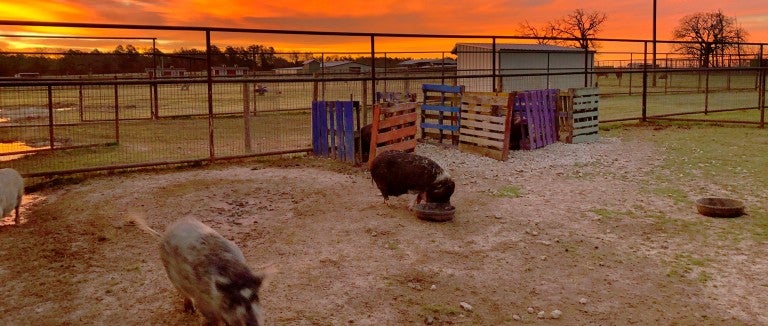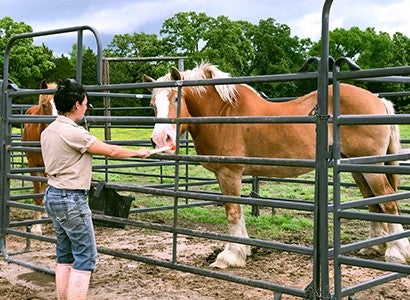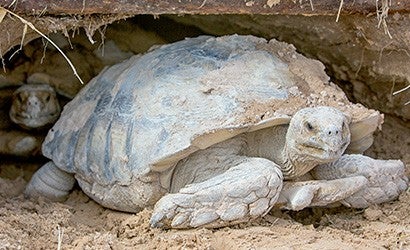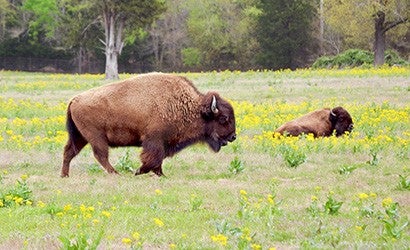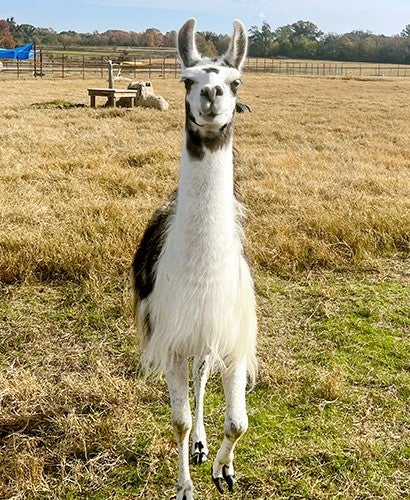At Black Beauty Ranch, titles like “caregiver” and “maintenance technician” don’t do the people who hold them justice, and they don’t capture the dozens of unique tasks the team carries out every day: figuring out how to get pine sap off a goat’s horn (rub it with peanut oil), learning how to “drag” a pasture to break up cow poop (pro tip: use the correct-sized ball hitch), monitoring a trail camera to figure out which wild animal is getting into the primate enclosure (a raccoon). It takes a special kind of tenacity and commitment to thrive in positions like these. Luckily for the sanctuary’s animal residents, the 30-plus team members are up to the challenge.
We’re sharing a “typical” day at Black Beauty Ranch, compiled from our All Animals team’s observations over three blisteringly hot days in mid-June 2023. We hope you’ll be just as humbled by the staff’s dedication as we were.
6:48 a.m.
Shane Echols, Matt Self and Devin Case sit in old white plastic yard chairs around the shop table, dividing up projects for the day, while Crispin Owen and Shon Hatfield check on equipment. Each morning, the facilities team assigns the day’s tasks. They try to get the jobs in full sun done in the morning. The day is already hot—near 80˚ F, with 91% humidity—and sweat pools on their foreheads.
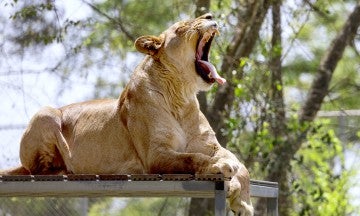
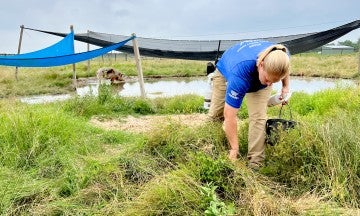
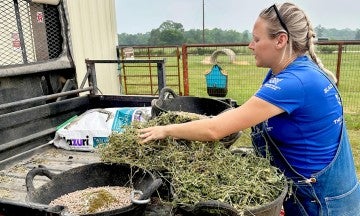
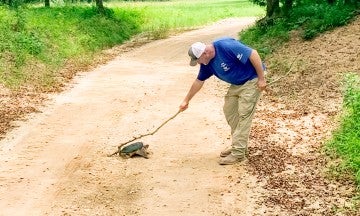
3:14 p.m.
On his way to check lightbulbs in the primate kitchen, Echols comes across a snapping turtle in the dirt road. He tries to entice the turtle to chomp the end of a long stick so he can gently pull him across the road to safety. When that fails, Echols grabs a long metal hook (used to clear culverts) from his truck to snag the turtle from a safe distance. “Come on, fella, move it along,” he says. This approach works, and Echols is back on the road.
Want more content like this?
This was written and produced by the team behind All Animals, our award-winning magazine. Each issue is packed with inspiring stories about how we are changing the world for animals together.
Learn MoreSubscribe
